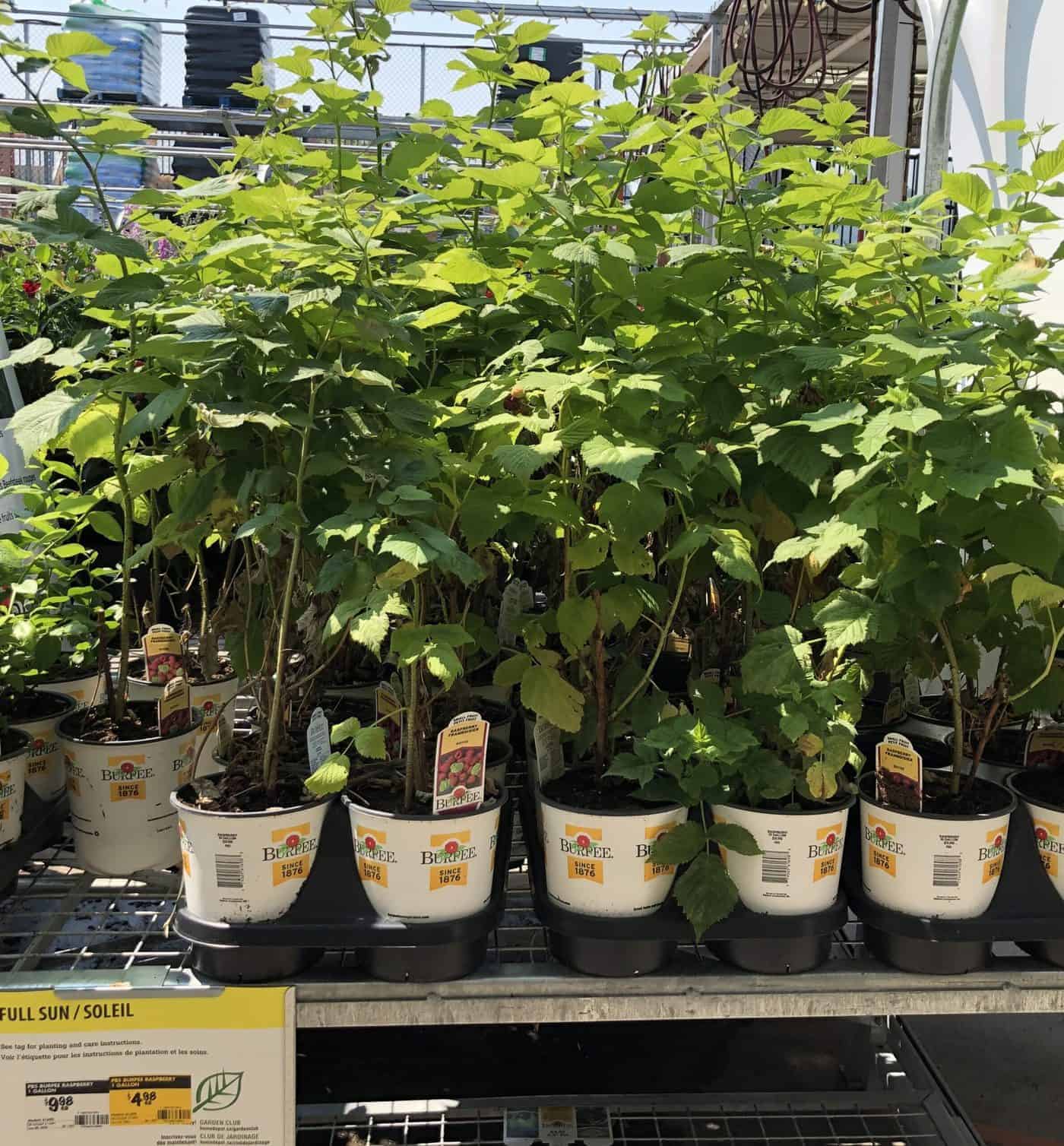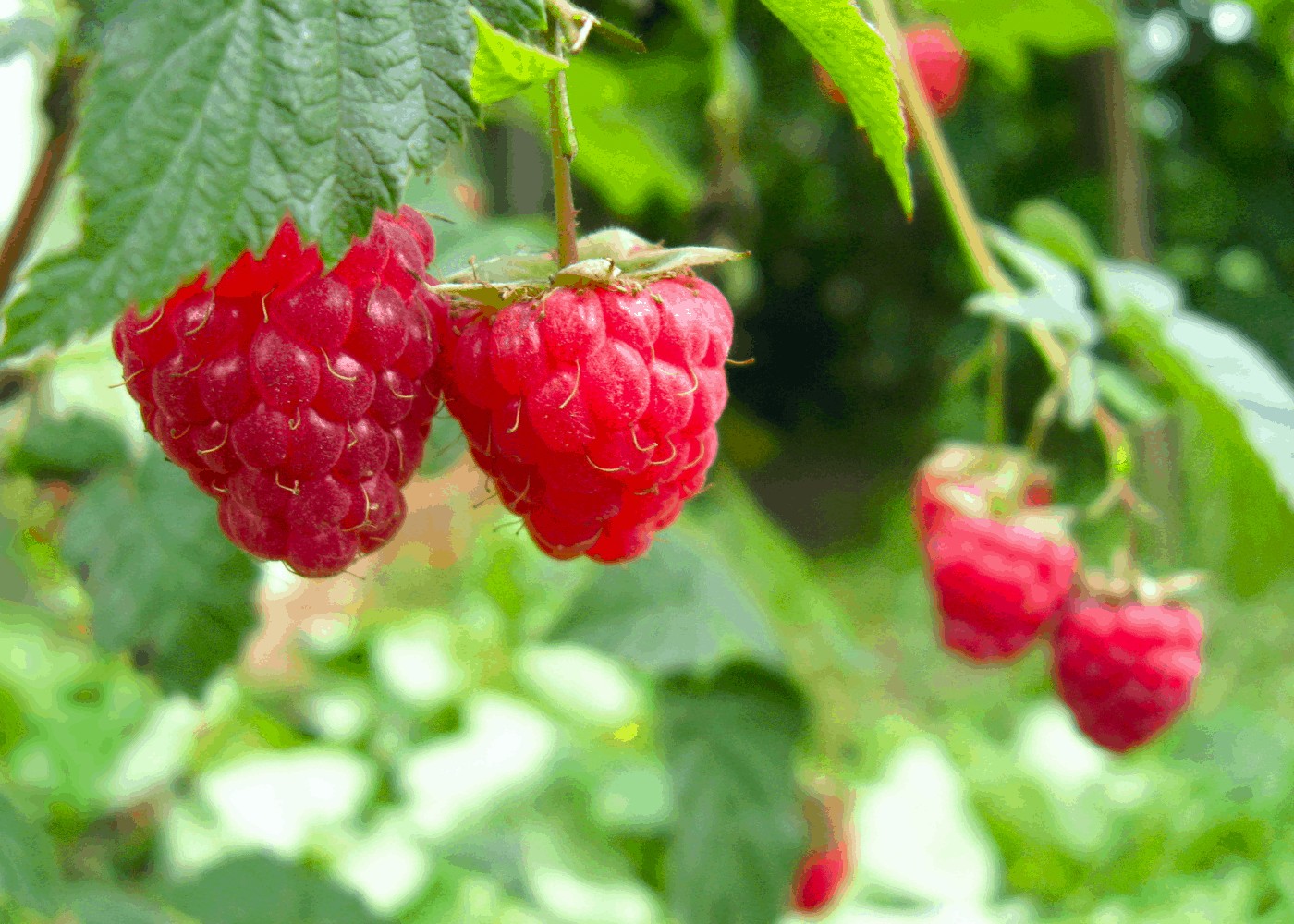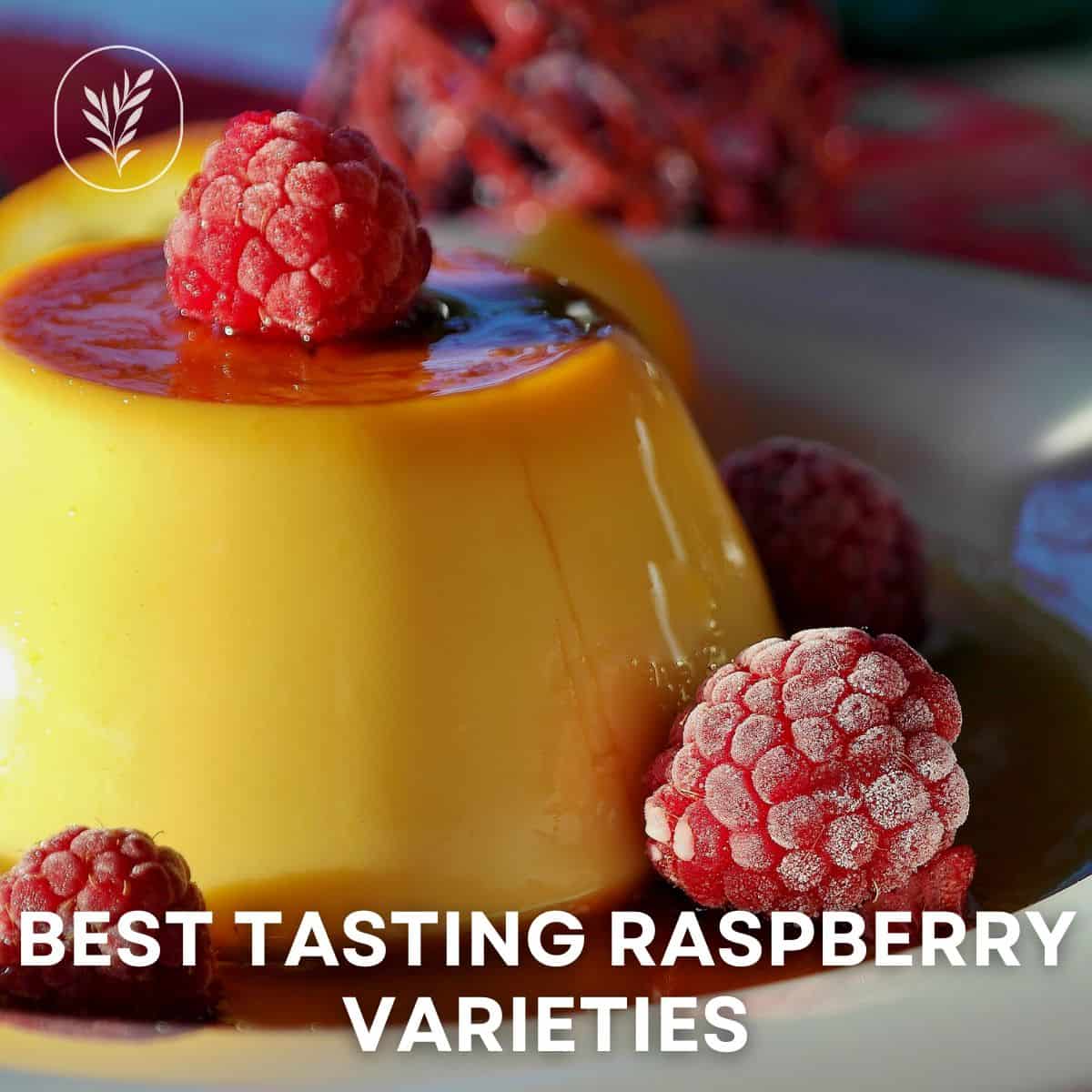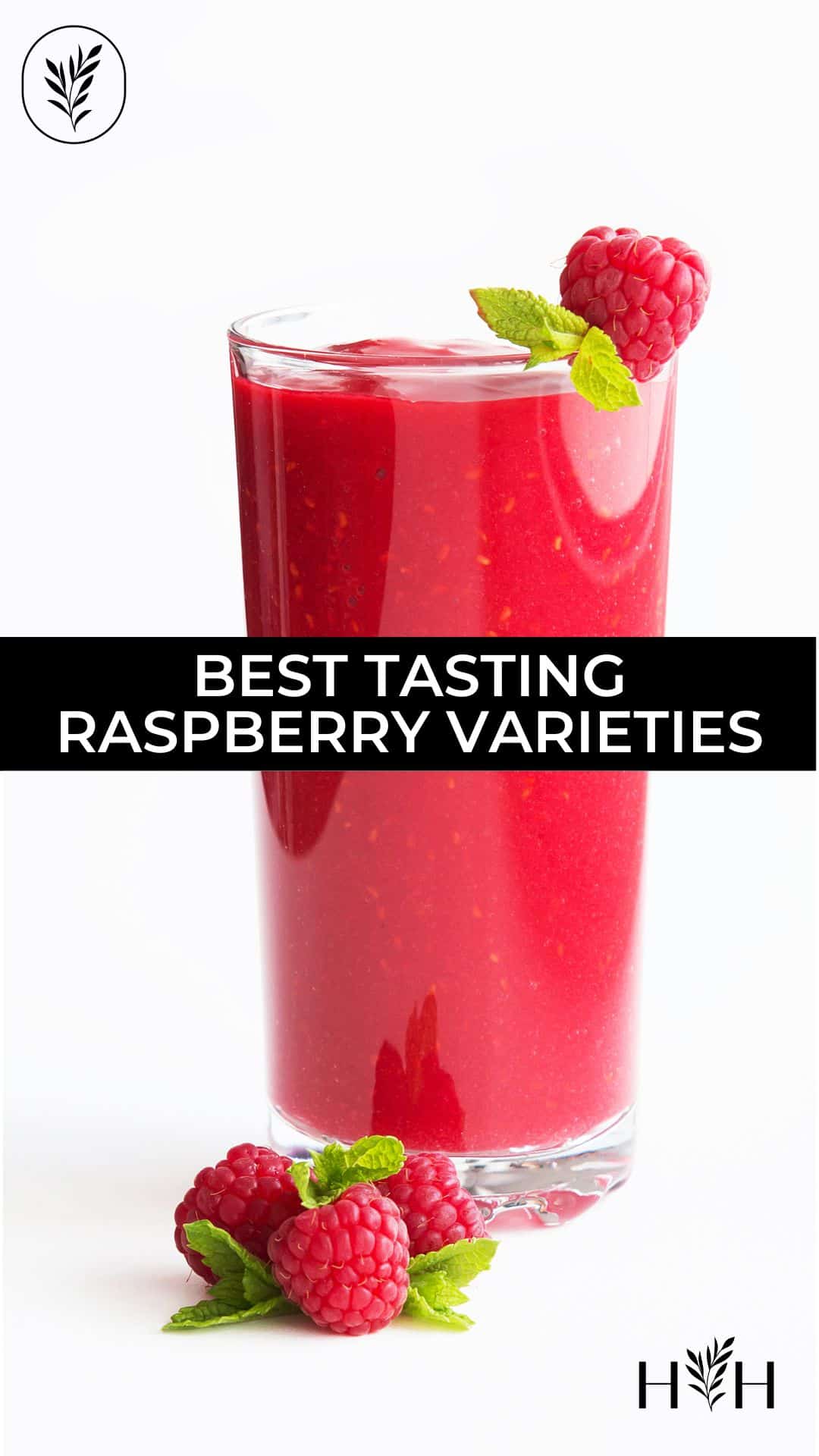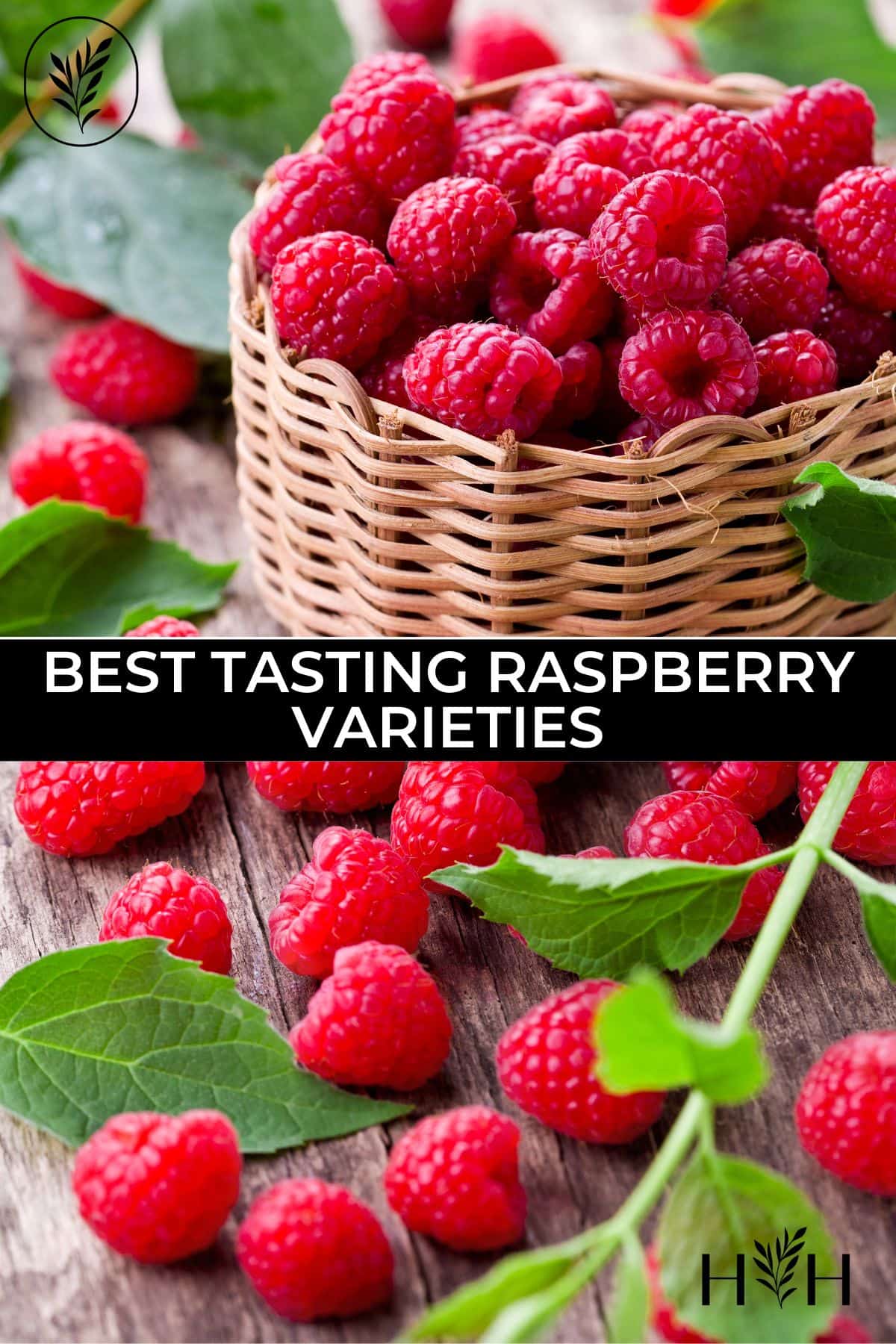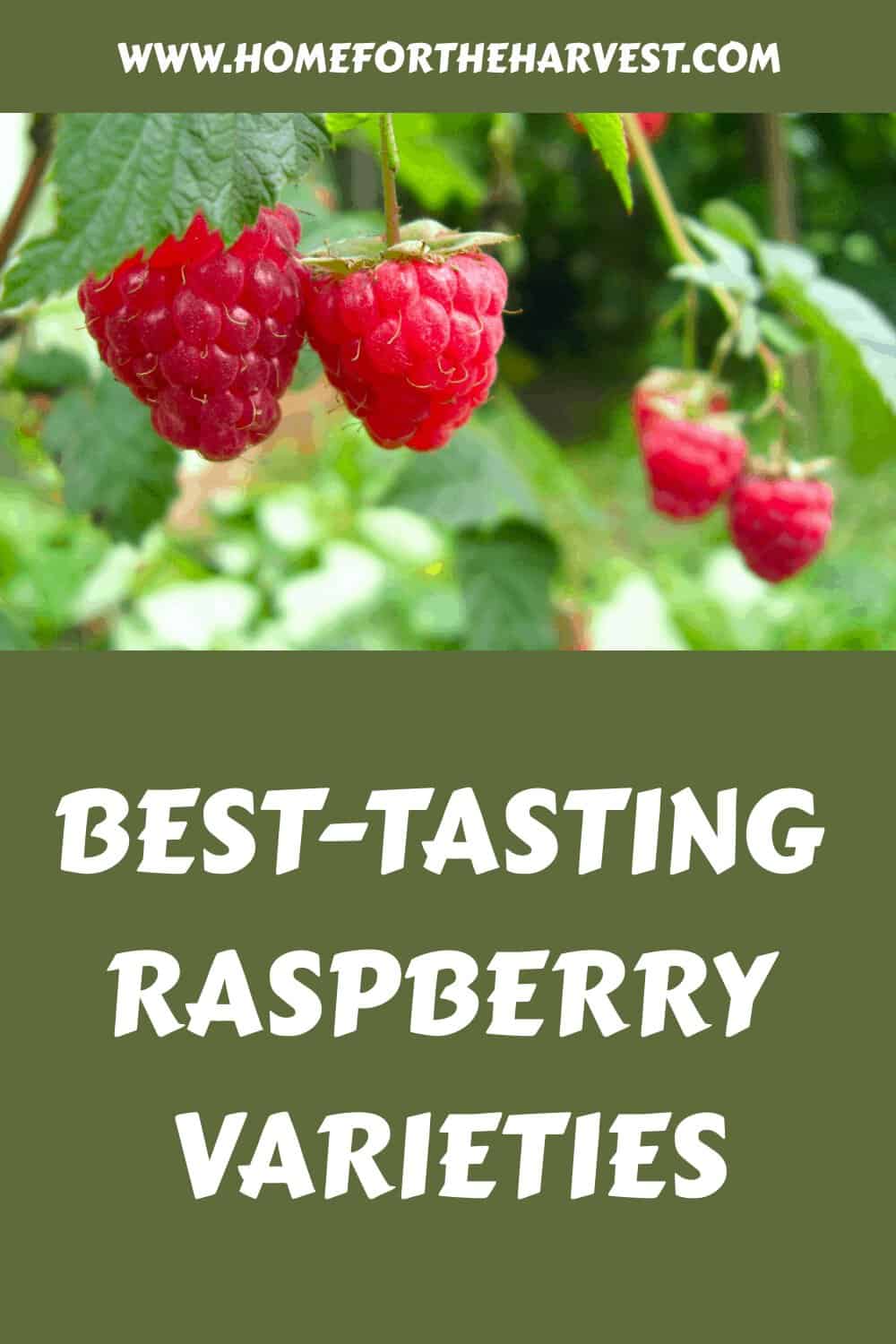Some of the best-tasting raspberry varieties include Caroline, Tulameen, Jaclyn, Anne, and Fall Gold. For any variety, a single plant can produce tastier berries some years as compared to others (particularly during sunny summers or when the canes are older). Raspberry plants that have been over-fertilized or grown in the shade may produce bitter berries. While most raspberry varieties are red, there are also some delicious yellow, black, and purple raspberries.
1. Caroline raspberries
Caroline raspberries are large red raspberries with a subtle yet tangy fruity flavor. They have a firm texture and a mild tangy taste. They’re excellent atop baked dishes!
Caroline raspberries ripen in July and again in September until the first hard frost. This variety is a vigorous grower, producing large berry crops. Caroline raspberry plants are self-pollinating and can be grown in Zones 5-8.
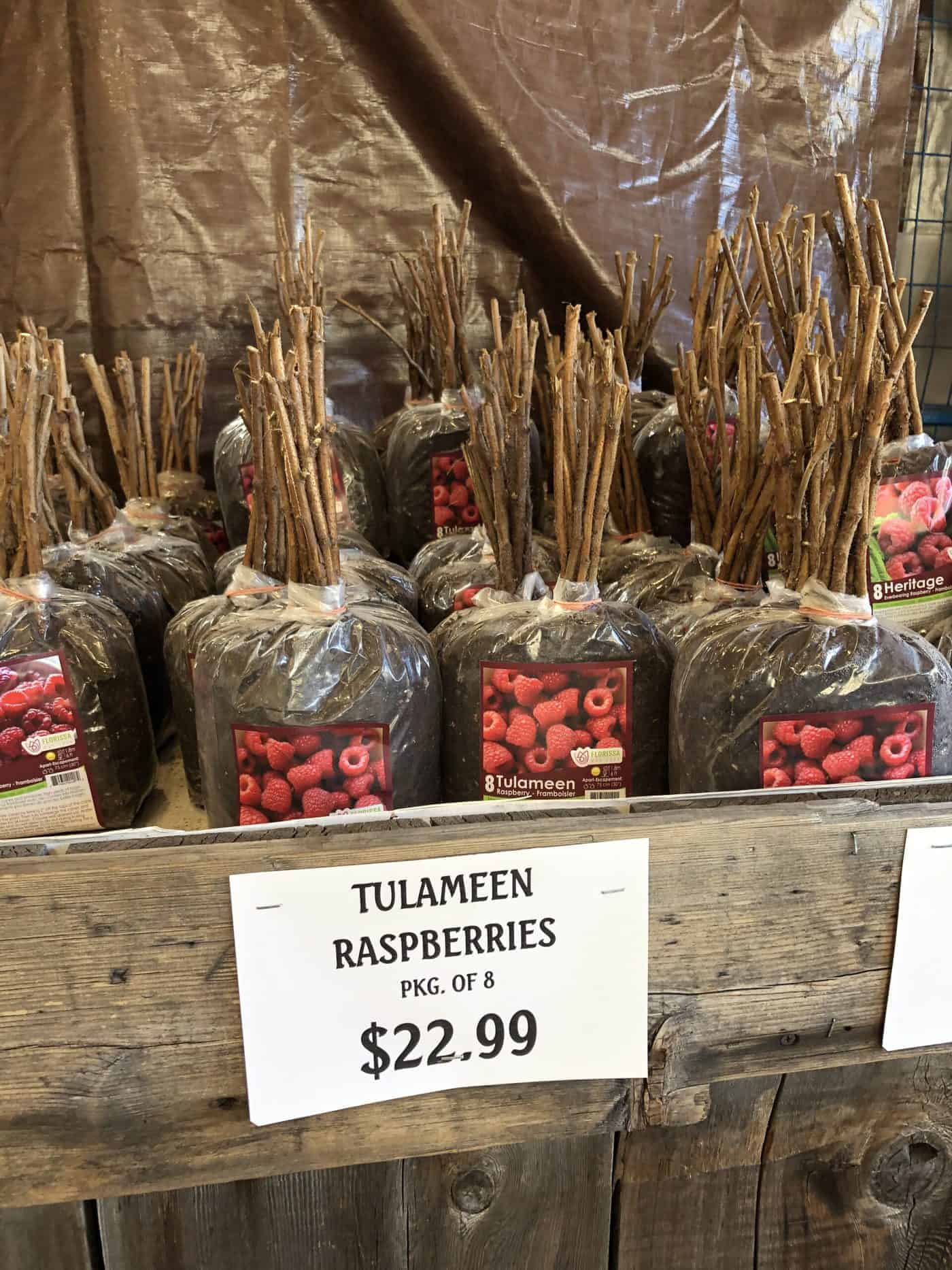
2. Tulameen raspberries
Tulameen raspberries are large, bright-red raspberries with a classic fresh raspberry flavor and a firm texture. Bred in Canada, these berries stand up well and have a familiar, conventional raspberry appearance while also having an excellent sweet taste.
Tulameen raspberries typically ripen in July-August for a bountiful period of about six weeks. This variety tends to thrive when grown in warmer areas (USDA Zones 5-9), and cannot survive overly-cold winters.
3. Jaclyn
Jaclyn raspberries are another flavor fave. This everbearing variety ripens in July and again in September.
The ‘Jaclyn’ variety was the highest rated for flavor in Michigan State University’s summer 2012 flavor ratings program. A comparison by Utah State found that this cultivar was the least affected by common raspberry growing problems like sunburn and raspberry horntail larvae infestation.
“Results to date indicate that some of the most flavorful cultivars are ‘Caroline,’ ‘Jaclyn,’ Polka and ‘Nantahala’.”
Consumer preferences for high-tunnel raspberry varieties, Michigan State University
3. Anne raspberries
Anne raspberries are light yellow with a fruity flavor and firm texture. They have a unique, mild, almost tropical pineapple taste that is a nice treat, along with their early-morning sunshine yellow color. Anne yellow raspberries are great on top of tarts, pavlova, pancakes, or even salads.
Anne yellow raspberries are everbearing. Berries start to ripen in July and continue to fruit (with a second main crop in September) until the autumn frost arrives. Anne raspberry plants are tolerant of cold and can be grown in Zones 4-9.
4. Fall Gold raspberries
Fall Gold raspberries are golden-colored raspberries with a luxurious sweet taste and soft, tender texture. These berries are a stunning addition to an autumn charcuterie tray and make a scrumptious topping on fresh desserts.
Fall Gold raspberries are known as an “ever-bearing” variety. They start to ripen in July and continue to fruit on the newer canes until the autumn frost arrives. These fall favorites can be grown in a wide variety of climates, from a chilly Zone 3 to a downright-hot Zone 10, although they tend to be most reliable in Zones 4-8.

5. Killarney red raspberry
Killarney raspberries are very sweet, firm, pretty red raspberries. They’re a classic-tasting sweet red summer raspberry. Eat them fresh in the garden or use them to make jam or sweet berry sauces.
Killarney raspberries ripen as a crop from late July through the month of August. These plants were developed in Canada to be cold-hardy, sweet red raspberries. Killarney raspberries grow best in the cooler growing climates of Zones 3-7.
6. Double Gold raspberry
Double Gold raspberries are pale peachy-red berries with a sweet fruity taste. The berries ripen from pale peach to an orange-red tone. Double gold raspberries have a tender, soft texture and are best enjoyed fresh from the garden or the farmer’s market.
Double Gold Raspberries start to ripen in July and put on a second flush of berries in late August-early September through frost (they are “double” bearing yellow raspberries). These berries were developed by Cornell University for their cold-hardy nature, double-bearing productive crop, and disease resistance, as well as their pretty peachy gold color. Double Gold Raspberries grow best in USDA Hardiness Zones 4-8.
7. Bristol raspberries
Bristol raspberries are large, firm, black raspberries. The flavor is different than red raspberries but is a superb example of black raspberry flavor. They’re great for eating fresh, frozen, or making black raspberry jam.
Bristol black raspberries ripen as a crop in July. These plants are relatively easy to grow and often do not require staking. Bristol raspberries were developed at Cornell University as a cold-hardy black raspberry with superior flavor. They grow best in Plant Hardiness Zones 5-8.
8. Polka raspberries
Polka raspberries are large, firm, and sweet red raspberries. These big red raspberries have a delicious, reliable classic raspberry sweetness. They’re lovely to eat, fresh or cooked.
Polka raspberries are “fall-bearing” and ripen over the weeks from late July to early October. Polka is a cold-hardy variety from Poland and is suited to growing in Zones 4-8.
9. Fall Red raspberries
Fall Red raspberries are large, firm red raspberries with a rich taste and juicy texture. These berries can be enjoyed fresh or used to top desserts or in preserves.
Fall Red raspberry plants are everbearing. The first berries on the overwintered canes ripen in June and July, followed by berries ripening on the new canes in August until frost. Fall Red raspberries grow best in Zones 3-8.
10. Himbo top raspberries
Himbo Top® raspberries are very sweet, juicy red raspberries with a hint of tart taste and a firm texture. These are some of the best-tasting raspberries when eaten fresh (or in jam or baked desserts). They’re also great for kids as they’re easy to pick and hold their shape well.
Himbo Top® Raspberries are everbearing. They start to ripen in July and put on a second crop flush in September. These plants are self-pollinating and extremely productive. Himbo Top Raspberry plants grow best in cooler areas, such as Zones 3-8.

11. BP1 raspberries
BP1 raspberries are large, sweet, bright red raspberries. They are a cross between Polka and Tulameen raspberries – two of the best-tasting raspberry varieties out there! These raspberries are easy to grow, easy to pick, and have a relatively long shelf life compared to other varieties. BP1 raspberries are very versatile and can be used fresh or cooked.
BP1 raspberries are everbearing. They produce early raspberries in June on their overwintered canes, with a main crop starting in August on the freshly-sprouted canes. BP1 raspberries were developed in Italy. These plants grow best in Zones 4-8.
“The new cultivar was discovered in October of 2006 in Trento, Italy as part of a planned breeding program. The purpose of the breeding program was to develop better primocane raspberries with bigger fruits. The new variety is the result of a cross between raspberry variety ‘Polka’ (female parent, unpatented) and raspberry variety ‘Tulameen’ (male parent, unpatented).”
Variety of Rubus plant named ‘BP1’, US Patent USPP22459P3
12. Crimson Night raspberries
Crimson Night raspberries are deep-red raspberries with a classic, sweet, and juicy raspberry flavor. These firm berries are known for their unique, rich, dark color and equally delicious flavor. They can be eaten fresh or used in cooked desserts or rich jams.
Crimson Night Raspberries start to ripen in late June, with another crop throughout September until frost. This variety was introduced by Cornell as a cold-hardy, self-pollinating, bountiful-yet-compact plant. Crimson Night Raspberries grow best in Zones 4-8.
13. Royalty raspberries
Royalty raspberries are large, burgundy-purple raspberries. They have a refreshing fruity flavor and are very pretty on top of a dessert. They can also be used to make richly-colored jam or berry compote.
Royalty raspberries are ready to harvest in late July through the month of August. They were developed by Cornell University to be a great-tasting, cold-hardy purple raspberry. Royalty raspberries grow best in Zones 4-8.
14. Brandywine raspberries
Brandywine is a purple raspberry with a vibrant deep-magenta color and a tangy, fruity taste. These large berries have a firm texture and are a true tasty delicacy, especially for those who don’t like their fresh raspberries too sweet.
Brandywine raspberries are everbearing and fruit intermittently from June through to frost. They were developed by Cornell University to be hardy, reliable plants that can adapt to different growing conditions. Brandywine raspberry plants are self-fertile and can be grown in Zones 4-8.
15. Autumn Bliss raspberries
Autumn Bliss raspberries are a large, red variety with a rich raspberry taste. These sweet berries have a dark red, almost burgundy color. They’re wonderful in late summer salads and straight from the garden!
Autumn Bliss raspberries typically ripen in a 2-4 week period in August-September, with a few more berries appearing until frost. The plant’s canes generally require a shorter 4′ raspberry trellis than some other varieties. This variety is a cold-climate lover and is best grown in USDA Zones 3-8 (up to a frigid -40°! ). Autumn Bliss has received the RHS Award of Garden Merit.
16. Amity raspberries
Amity raspberries are large, sweet raspberries with a dark red color. They are known for their excellent flavor. They’re sweet and juicy, with a lovely firm texture.
Amity raspberries are everbearing and produce berries in both summer and early fall. This self-pollinating variety thrives in a variety of climates (USDA Zones 4-9), but generally cannot survive overly-cold winters.
17. Chilcotin raspberries
Chilcotin raspberries are large, firm, tasty red raspberries. The juicy and plump fruits can be enjoyed fresh or used to make jams and jellies.
Chilcotin raspberries ripen in midsummer, generally from the end of June to the beginning of August. These berries grow best in Zones 4-8.
18. Heritage raspberries
Heritage raspberries are medium-sized, dark-red berries with a mild sweet-tart taste. These berries are known for their appealing yet subtle taste and versatility in all sorts of fresh and cooked recipes. Heritage Raspberry plants are also popular because they tend to produce more fruit when newly planted.
Heritage raspberries are everbearing and start to ripen in July, and they put on a second crop in September-October. These Cornell University raspberry plants are reliable, cold-hardy, self-pollinating, and bear fruit for months. Heritage Raspberries grow best in Zones 4-8.

19. Encore raspberries
Encore raspberries are classic firm red raspberries with a very sweet taste. The plants are easy to grow and reliably produce abundant crops of large, juicy raspberries.
Encore Raspberries ripen in a relatively short season, generally from late July until early August. These self-pollinating raspberries were developed by Cornell University as classic red raspberries with exceptional heat and cold tolerance for adaptability to a variety of growing climates. Encore Raspberries can be grown in Zones 4-9.
20. September raspberries
September raspberries are classic red raspberries with a tart flavor and firm, juicy texture. September Raspberries can be eaten fresh but are known for their excellent characteristics in baked desserts, as they hold their shape better than other types.
September raspberries are everbearing, with an early crop in June and a second crop in September (or earlier in warmer areas). September raspberries grow best in Zones 3-8.
21. Latham raspberries
Latham raspberries are another cultivar known for being excellent for fresh eating. The plants are tolerant of less-than-perfect soil and are also quite cold hardy. This self-pollinating cultivar is a summer-bearer, with the crop generally ripening in July.
22. Canby raspberries
Canby raspberry is a variety of large red raspberry. The plants are self-pollinating, and the canes are nearly thornless. Canby is a summer-bearing cultivar, with harvest occurring in mi-July most years.
